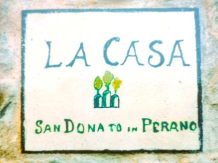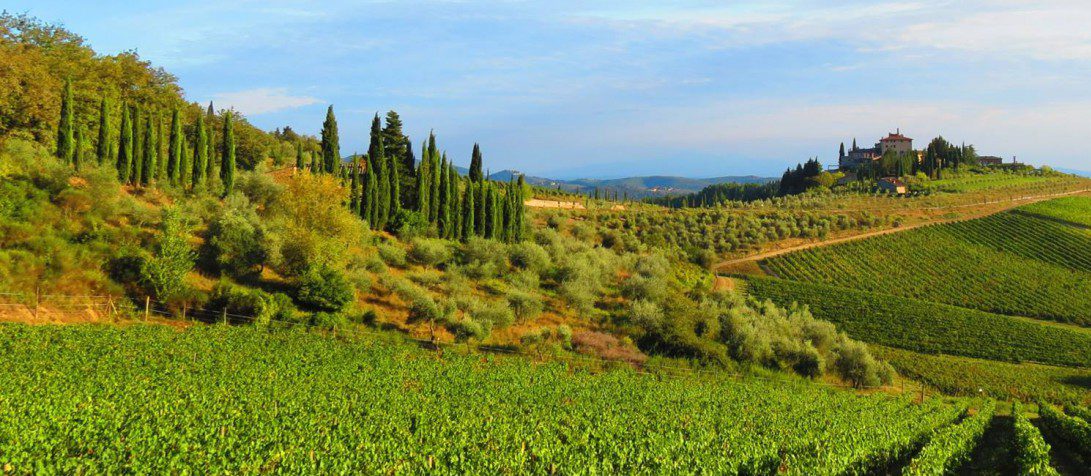
Above: “37 Uve” (“37 Grape Varieties”) by Tuscan naturalist painter Bartolomeo Bimbi (1648-1729). The painting was executed nearly 100 years after the publication of the passage below and was commissioned by Cosimo III de’ Medici. The author of the below passage visited Tuscany when Cosimo II ruled the “Dukes State of Tuscany.” The painting resides at the Medici Villa Poggio a Caiano and was part of a series of paintings commissioned by Cosimo III to document the agricultural products of Tuscany.
Today’s post comes from ante litteram Italian wine blogger Sir Robert Dallington (1561-1637).
“As writer, traveler, courtier, and pioneer of taste Sir Robert Dallington made a largely unacknowledged contribution to the culture and thought of Elizabethan and Stuart England. He had an unusual and successful career: The poor Northamptonshire village boy who was to become the respected counselor of two royal princes, Henry and Charles. No satisfactory account of his life and work exists, since apart from a brief and incomplete entry in the Dictionary of National Biography all we have are a few scattered notices of his books” (“Sir Robert Dallington (1561-1637): Author, Traveler, and Pioneer of Taste” by Karl Josef Holtge).
In 1605, Dallington published A Survey of the great Dukes State of Tuscanie [sic], an account of his trip to Tuscany in 1596 (he accompanied his pupil, Roger the 5th Earl of Rutland, a member of the Manners family, “wealthy landowners, courtiers, connoisseurs, and travelers,” on Roger’s grand tour of Italy, France, and Germany).
In it, he devotes a few passages to descriptions of grape growing and winemaking, including the one that I have transcribed below.
I wanted to share it here to give readers a sense of the radical differences between Tuscan viticulture before the industrial era and the present era.
A few weeks ago, we posted a couple of excerpted translations from an agriculture survey published in Italy in 1882 (here and here).
As those documents reveal, by the end of the nineteenth century, grape growers and winemakers had grubbed up many of their vineyards and, following Baron Ricasoli’s lead, had replanted predominantly to Sangioveto (Sangiovese).
But until that time — I believe — viticulture in Tuscany was widely varied and not focused on the production of fine wine, as Dallington recounts in the passage below. I hope you find it as fascinating as I do.
I have introduced modern spelling and punctuation for clarity’s sake but have retained some of the Elizabethanisms where possible.
*****
From “A Survey of the great Dukes State of Tuscanie,” by Sir Robert Dallington, 1605, folio 32.
The Vine, which without comparison is the greatest commodity of Tuscany, if not of Italy, hath these uses. Of the Grape they feed, of the juice they make Wine; of the shreddings they make small bundles, like our Fagots of Gaule in Cambridge, and sell them for twoquatrini a piece for firing; of their leaves they feed their Oxen or else dung their land; and lastly of the stones they feed their Pigeons, which after the Vintage they riddle out of the Grape being dried, and these they sell at 20 soldi the Staio [sextary].
There are diverse sorts of Grapes, the names of such as I remember are these: Uva Canaiola, good either to eat or for Wine; Passerina, a small Grape, whereof Sparrowes feed [hence the name, from passero, Ital. for sparrow], good only for Wine; Trebbiana, the best sort of white Grapes for Wine, whereof they make their Vin Trebbiano; Zibibbo, these are dried for Lent; Moscatella with a taste like Musk, not for Wine for to eat; Uva grossa, not to eat but for Wine; Raverutta, of itself neither to eat nor for Wine but a few of these put among a great vessel of Wine, giveth it a color, for which use it only serveth; San Columbana and Rimaldesca a very delicate Grape, either for Wine or to eat; Lugliolawhich hath his name for the month of July wherein in is ripe, better to eat than for Wine; and lastly Cerisana, named for the taste it hath like a Cherry, better for Wine than to eat.


